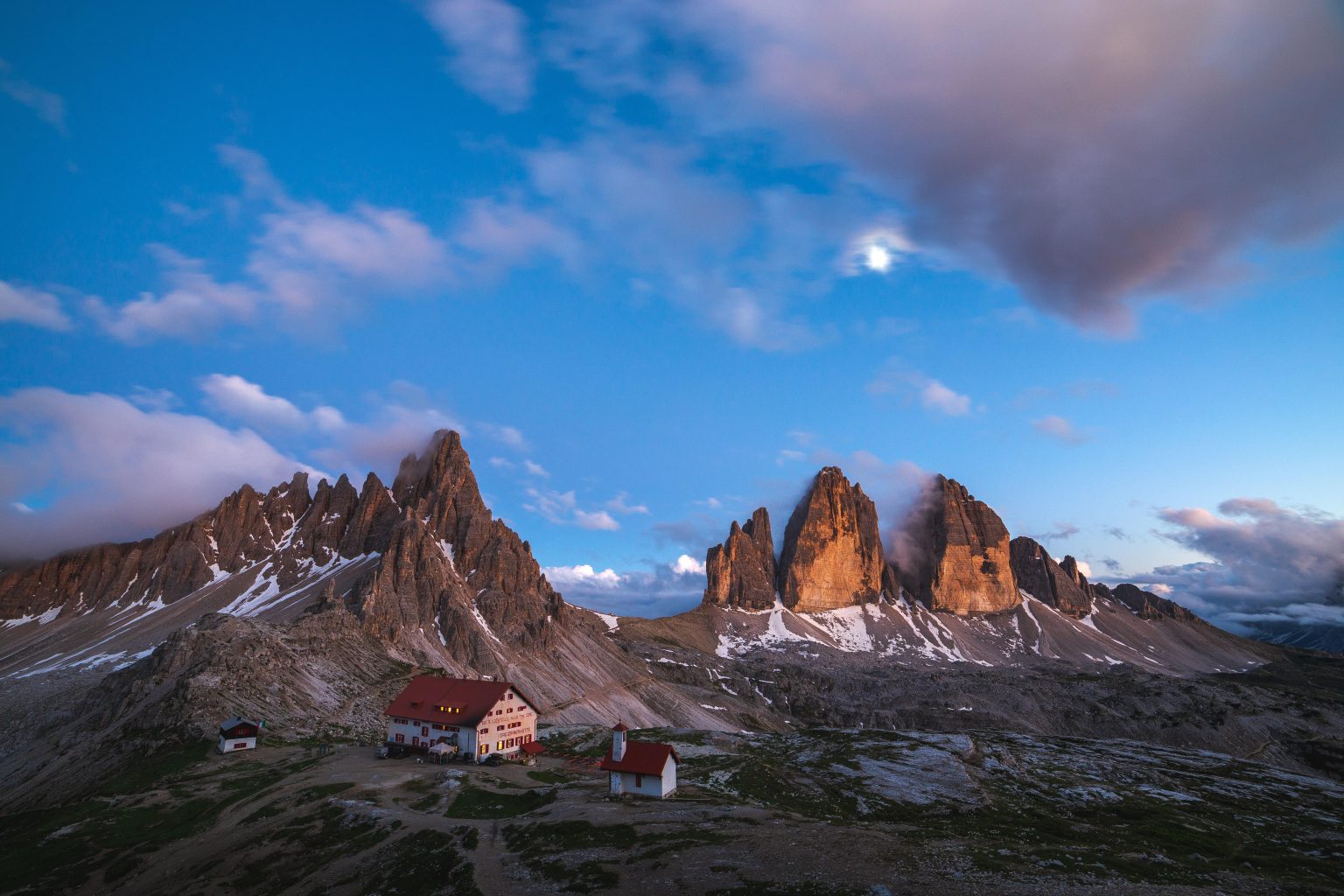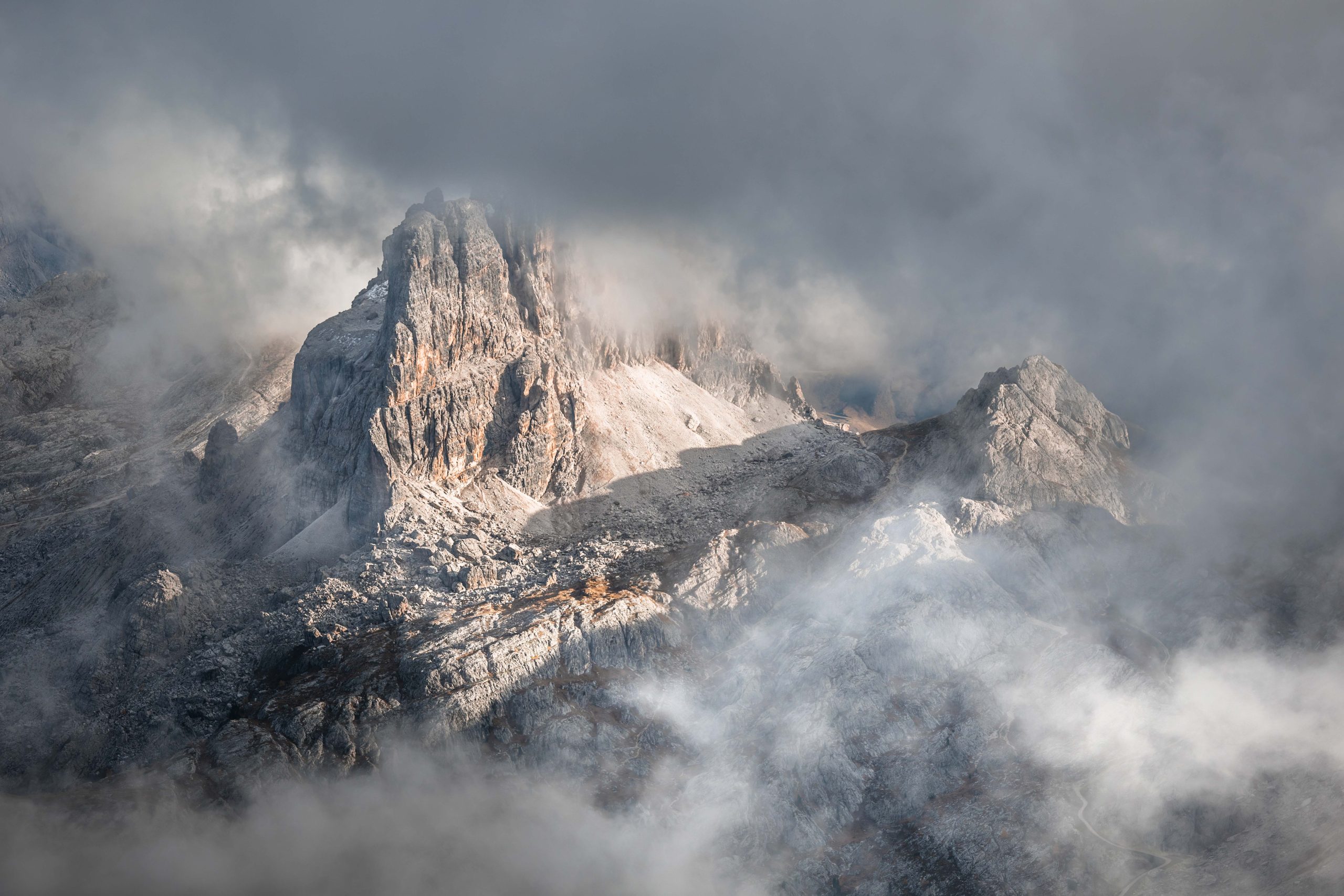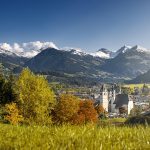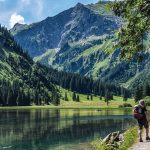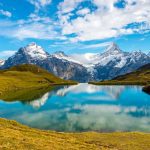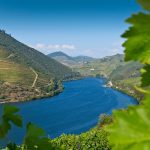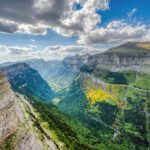This wild and spectacular journey includes natural treasures like Cinque Torre, the Tofana group, and Fanes-Sennes-Braies Natural Park, many of which are parts of the famed Alta Via 1. It also highlights the exquisite Alta Badia valley.
Experience a UNESCO World Heritage landscape rich in flora, fauna, charming woodlands, and dramatic views. Unique rock formations tower over upland flower meadows, hamlets, and traditional farmsteads. Witness the ‘Enrosadira,’ where sunsets turn massifs fiery rose-pink.
Stay in a mix of traditional hotels, guesthouses, and rifugios (huts) with stunning backdrops, including a night in Cortina, the ‘Pearl of the Dolomites.’ With our maps and route notes, self-navigation is effortless. You walk, and we handle the rest, ensuring a perfectly organised adventure.
Take a look through this page for everything you need to know about our Cortina to Tre Cime hut-to-hut walking holiday and when you’re ready, click the ‘Enquire’ or ‘Book Now’ buttons, complete the information and let our skilled enquiry team help you make this holiday a reality.
Gallery
At a glance
22 June to 23 September 2024
(You can start any day)
2-3 people – £1695pp
4 + people – £1625pp
Single Supplement – £160
Moderate/Challenging
Expect to walk for 5 – 8 hours each day with between 530m – 1170m of ascent and 550-1370m of descent each day
All Hut bookings at half-board (breakfast and dinner included)
B&B Accommodation in Cortina on your first and last night
Return private airport transfers between Venice Marco Polo or Treviso and Cortina d’Ampezzo
Holiday Pack with comprehensive route notes, maps & more
Digital Map Access for the duration of your trip
Excess baggage storage in Cortina
Please note that packed lunches and refugio showers (which cost €3-6) are not included.
This holiday begins and ends in Cortina D’Ampezzo. The best option for this holiday is to fly in and out of Venice Marco Polo. Private transfers between Venice and Cortina are included at the start and end of your holiday.
Fly-driving and self-driving are also an option. If you plan to hire a car, please click here for a competitive quote.
Itinerary

Day 1 - Arrive
Make your own way to Venice. A private transfer from Venice Marco Polo airport to Cortina, the Pearl of the Dolomites, is included. At 1200m, this is a vibrant alpine gem with awesome backdrops that reflect its proximity to the great Dolomite massifs. Private transfers are also available from Treviso or Innsbruck – please contact us for more details.
Accommodation: 3* Hotel in Cortina (B&B).

Day 2 - Lake Federa and Cinque Torri
Route Statistics: 15km, 6-7 hours walking, 980m ascent / 550m descent
After a short transfer (included) today’s hike features two memorable landmarks: Lake Federa and the Cinque Torri group. The lake hosts a mesmerising panorama of the Sorapis and Cristallo ranges, looming large over Cortina, whilst the Cinque Torri (Five Towers) lies in a dramatic theatre of rock formations at a crossroads of glorious hiking trails.
Accommodation: Rifugio Cinque Torri (Half Board)

Day 3 - Lagazuoi and Fanes
Route Statistics: 18km, 7-8 hours walking, 700m ascent / 1370m descent
Today’s trek is the longest of the week. You begin it by descending through the Nuvolau range to the Falzarego Pass, your gateway to Monte Lagazuoi, another highlight of the Dolomites, which is celebrated for its 360 panoramas but also for its deep connection with a fascinating alpine military conflict that unfolded here between the Italians and the Austrians during WWI. Amidst sensational scenery, you find yourself in an open-air museum of trenches, look-out posts and tunnels. This is the birthplace of Via Ferrata, a positive remnant of the cables, ladders and gorge-spanning bridges that allowed alpine soldiers on each side to observe the actions of the nearby enemy. After Lagazuoi, you follow the famed Alta Via 1 trail, heading deeper into the Fanes-Sennes-Braies Nature Park.
Accommodation: Rifugio Fanes/Lavarella/Muntagnoles (Half Board)

Day 4 - Fanes-Sennes-Braies Nature Park
Route Statistics: 12km, 5-6 hours walking, 740m ascent / 580m descent
After yesterday’s lengthy trek, you might welcome today’s easier hike between the Fanes and Sennes massifs. The trail winds through narrow gorges on the northern rim of the Fanes group and high meadows in the upper Val Salata, before you are required to negotiate the steep ascent up the southern slopes of the Sennes massif. Experienced hikers may choose to ascend the Croda del Becco peak on a challenging trail over one of the peak’s ridges, the reward being a vast panoramic view to the north with beautiful Lake Braies at the foot of the mountain 1300m below.
Accommodation: Rifugio Sennes (Half Board)

Day 5 - Braies Dolomites
Route Statistics: 17km, 7-8 hours walking, 830m ascent / 1080m descent
The route today is easterly and more remote, as you venture onto trails more frequented by wildlife than people. You skirt the main ridge of the Croda Rossa massif on the north with a fabulous view of the red peak itself. You are now close to the most northerly range of the Dolomites, the alps of the Val Pusteria, which boast a completely different shape and origin compared to other Dolomite massifs. Your overnight stop is in the Alpe di Vallandro range, a truly idyllic place of peaceful, lush-green, upland pastures at 2000m, from where you will be absorbed by the spellbinding view of Monte Cristallo in the rays of the setting sun.
Accommodation: Rifugio Prato Piazza (Half Board)

Day 6 - Tre Cime di Lavaredo
Route Statistics: 14km, 7-8 hours walking, 1170m ascent / 850m descent
Today is a real thriller(!) starring the most photographed peaks in the entire Dolomites, the Tre Cime di Lavaredo (Three Peaks of Lavaredo). Or in German, the Three Teeth (Drei Zinnern). The iconic view of the Dolomites’ signature peaks opens up before you, as you gradually ascend through the enchanting woodland. To make things better, you approach them from the north-west, as they bask in the rays of a setting sun, thereby taking on a rich and bewitching orange-yellow hue. Photographers will barely contain themselves in this most glorious of landscapes. To cap off your pleasure, your overnight hut faces the peaks, so you can admire them from various angles at both sunset and sunrise.
Accommodation: Rifugio Tre Cime Locatelli
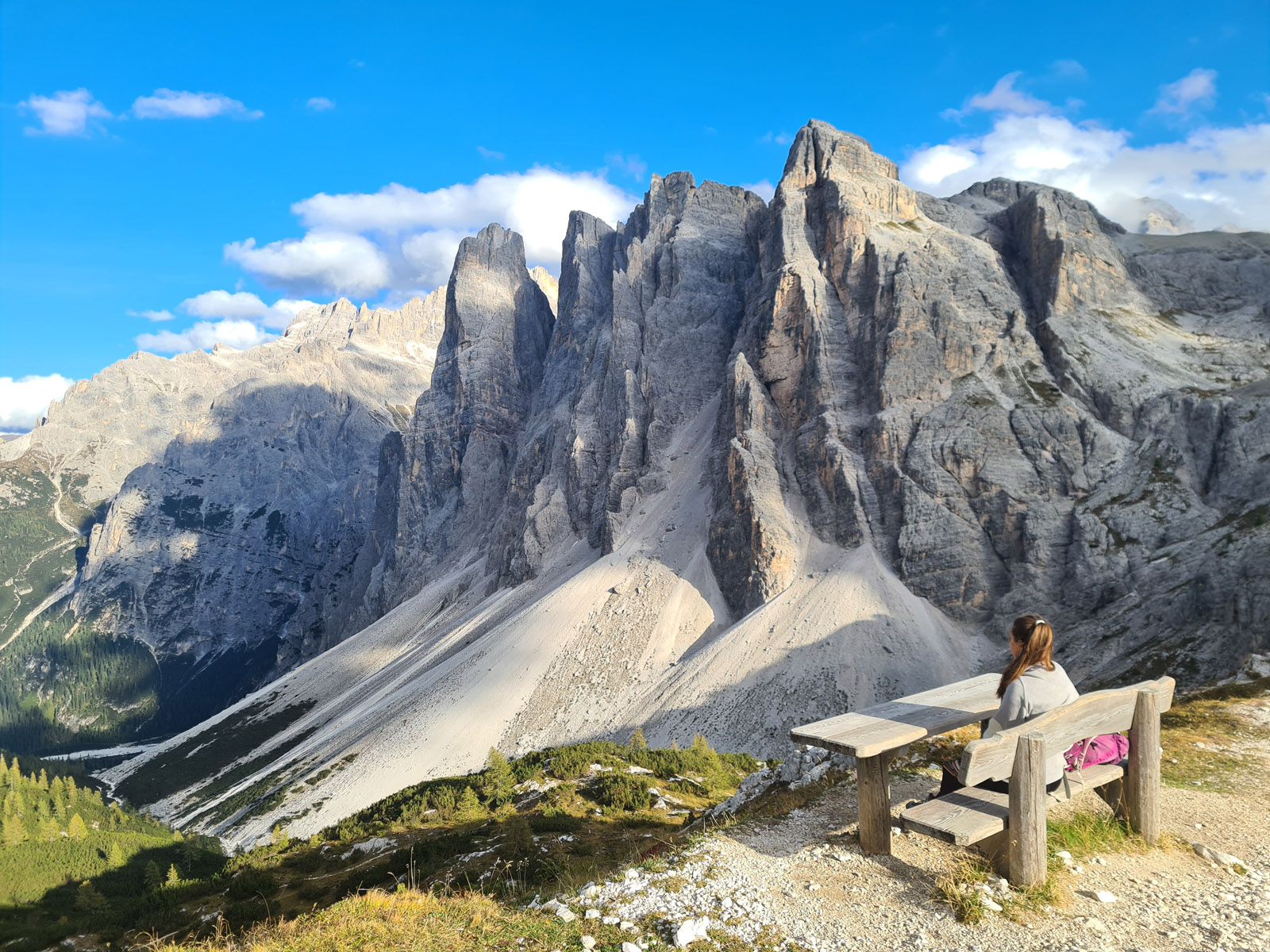
Day 7 - Sexten Dolomites
Route Statistics: 11km, 5-6 hours walking, 530m ascent / 640m descent
Your final hike is an adventure into the Sexten (or Sesto) Dolomites, where you will ascend one of its peaks before returning to Cortina. Your day begins by contouring an impressive natural amphitheatre with a series of lakes at its bottom. Ice and snow linger long in these lakes, which catch the winter avalanches that tumble down the flanks of the amphitheatre. Next, you hike up to the Pian di Cengia saddle, where a cosy rifugio with excellent cuisine awaits you. We recommend ascending the nearby peak, the eastern Cima Uno, before being tempted by the hut’s offerings. Your trek finishes on a scenic trail above two gorges, which eventually brings you down to the road, where a short transfer by public bus (1hr, not included) returns you to Cortina.
Accommodation: 3* Hotel in Cortina (B&B).

Day 8 - Depart
Be prepared for an early start! A return private transfer from Cortina to Venice Marco Polo (or Treviso) is included.
It’s a 2hr+ transfer so if your flight is at 11am, we’ll aim to have you collected at 7am.
Accommodation
This itinerary is based on half-board, dormitory-style accommodation in the huts (rifugios).Your first and last night will be spent in Cortina on a B&B basis. Private rooms are available at a £20 per person per night supplement (this is subject to availability, so please request at the time of booking).
Need to Knows
Trusted Local Partner – please note that this holiday has been organised by us in association with a trusted local partner based in the Italian Dolomites.
Minimum number – This holiday requires a minimum of two people.
Terrain – on a typical hut-to-hut route the terrain will vary significantly, but for most of the route you will be hiking through moderately difficult terrains. Exposed trails are not unusual on these routes, but they are widened or properly secured, normally with a metallic cord or chain, so that hikers pass without gear safely. This holiday only use waymarked and signposted routes. Trails vary from well-trodden woodland paths to steeper paths on looser, rocky terrain and in the high mountains a certain level of experience, surefootedness, and fitness are essential. In early season on higher terrain, you might also have to cross patches of late lying snow.
Rifugios – Except on nights 1 and 7, you will stay overnight in ‘rifugio’ (mountain huts). These generally offer the following facilities: a bed in a shared room or in a private room (these must be booked in advance and cost £20pp/ night extra, subject to availability), showers with hot water, toilets, meals, and a water supply for refilling water bottles. Snacks such as sandwiches and chocolate are also usually available for sale. Shared rooms are equipped with bunk beds with mattresses, pillows and blankets. Bed linen is not provided in shared bedrooms: you must have a sleeping bag liner (typically, this is simply a light cotton bag). A warm sleeping bag is generally unnecessary, since there are always blankets in the rooms. If you have pre-booked a private room you are often offered bed linen, thus a sleeping bag liner is not required but this will be confirmed when you book. Finally, you will need clean footwear for the huts: light sliders are an ideal solution.
Breakfast & Dinner – Normally, breakfast is served from 7am to 9am. It usually includes unlimited tea and coffee, bread, butter, jam, honey and chocolate spread. In addition, some mountain huts also offer ham, cheese and muesli. You can also fill up your your flask/thermos with hot water or tea at breakfast: ask the staff, and it will be free in most huts. Dinner is usually served at 7pm or 7:30pm for all guests. A typical dinner in a mountain hut is very rich and includes a starter, a first course (such as pasta, risotto, dumplings), a second course (meat with a side dish) and a dessert. Any drinks at dinner (water, wine, beer, tea, coffee) are not included and should be ordered and paid separately.
Lunch – It is often possible to stop for lunch in the mountain huts you pass on the route, but this option is not always available. In such cases we recommend you buy some light snack (sandwiches, yoghurt, chocolate, water) from the hut where you have stayed the previous night. Mountain huts prepare for lunch the same dishes as for dinner. The cost of a typical hot dish, e.g. pasta or risotto, in a mountain hut varies from €7 to €12.
Safety – It is your responsibility to be wear appropriate outdoor clothing, follow good practice safety in the mountains procedures and be realistic when calculating how long the route each day will take you given your fitness, experience. and ability. These self-guided hut-to-hut walking trips are planned so that they do not require specific skills or gear, unless it is clearly specified in the itinerary. You can expect well-maintained trails equipped with direction signs. Exposed sections of the trail are secured on the self-guided routes: it makes them safe provided that you follow the basic safety rules for hiking in the mountains.
Weather – The weather in the Dolomites is most stable from the second week of July till the middle of September. This period in the Dolomites is characterized by warm sunny weather and modest rainfall. Earlier in June, the weather is normally favourable, but it is less reliable, and the mountain passes may be blocked by snow remaining from the winter. In June we may have to change the route depending on the snow situation on the passes. The second half of September in Dolomites is a beautiful period, but the weather is again less predictable: the probability of incessant rain increases, and it may snow at the altitude above 2,000 meters.
It is never hot in the Dolomites at the elevation of 2,000 m and above where most of the hiking routes pass. In a sunny day in August the temperature at 2,000 m can reach 20° Cduring the warmest hours of the day. It is comfortable for hiking. In a cold cloudy day, the temperature can stay at around 10° C during the entire the day. It is always chilly at night and early in the morning. Thunderstorms, often with hail, are typical for the warmest months (July and August). In the Dolomites valleys at the altitudes of 1,000 – 1,500 m the day temperature can reach 27° C. It is fresh in the valleys in the morning and evening, and it is not stuffy at night even in the hottest weeks of the summer.
Trusted Local Partner – please note that this holiday is organised in collaboration with a trusted local partner based in the Dolomites.
Booking Conditions – be sure to read our full terms and conditions here before booking.
At Your Own Risk – please read the important notes here.
Travel Advice – check your government’s travel advisory for up-to-date information and advice about your destination. For UK citizens, check the latest Foreign, Commonwealth & Development Office advice here.
Passport & Visa – any questions should be directed to the relevant embassy of your destination country; find out more here. It is your responsibility to be in possession of a full passport, valid for your chosen destination.
Travel Insurance – having adequate and valid travel insurance is a condition of booking with us. Details of our insurance partner, Campbell Irvine, are here.
Health Information – You should carry either an European Health Insurance Card (EHIC) or a Global Health Insurance Card (GHIC) Neither is an alternative to adequate travel insurance. For more information visit https://www.gov.uk/foreign-travel-advice and https://travelhealthpro.org.uk/
ABTA – Independent travel advice and help is always available from ABTA by calling 020 3117 0599 or visiting www.abta.com.
